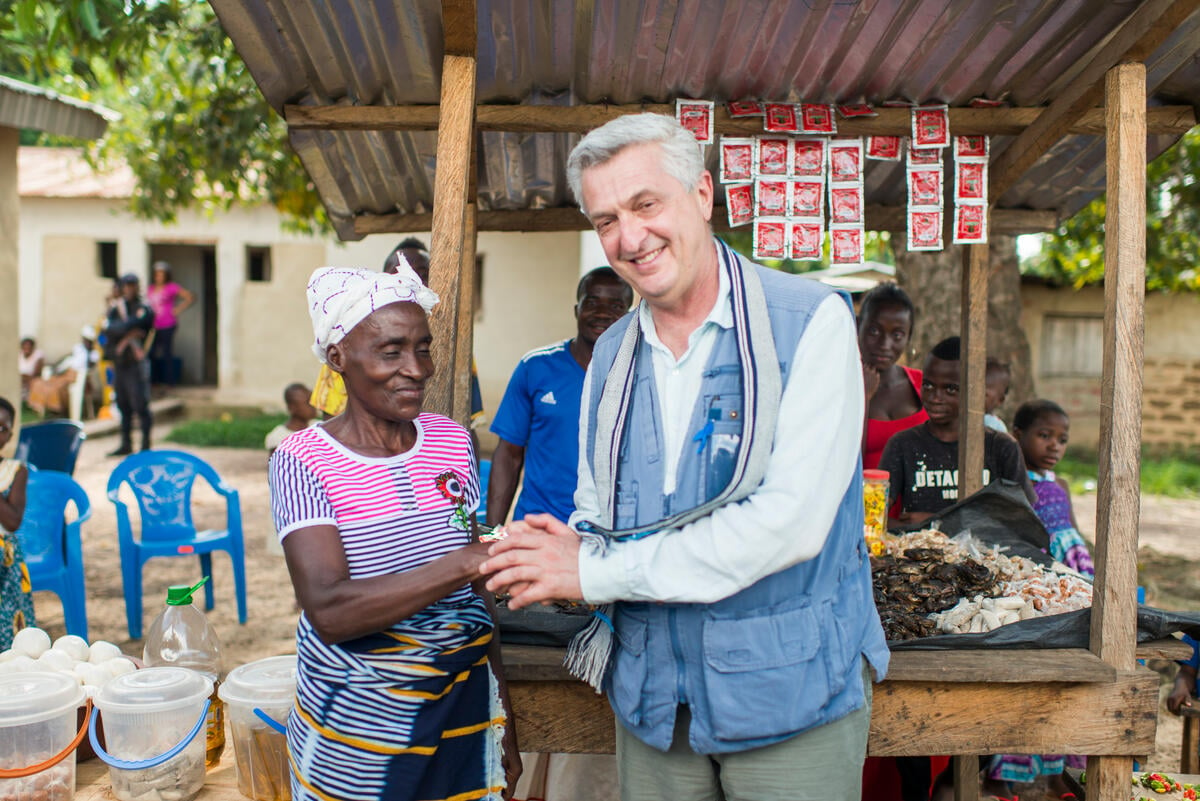Renewed fighting in Liberia leads to second mass displacement in two weeks
Renewed fighting in Liberia leads to second mass displacement in two weeks

MONROVIA, Liberia, Feb. 21 (UNHCR) - Fighting in the mining town of Bong Mine near the capital of Monrovia between troops loyal to President Charles Taylor and rebels trying to overthrow him has caused the displacement of at least 20,000 persons, the United Nations High Commissioner for Refugees said Thursday.
The fighting Tuesday in Bong Mine, just 80 kilometres north-east of the capital, marked the second time this month that rebels belonging to Liberians United for Reconciliation and Democracy have succeeded in bringing the fighting to the doors of the capital. A rebel attack on Klay Junction north of Monrovia last February 7 sent tens of thousands of people fleeing, including some 6,000 who sought shelter in refugee camps established for Sierra Leoneans.
Most of those who fled the most recent clashes sought refuge in Kakata, some 70 kilometres north-east of Monrovia. Reports from the area said many were desperately seeking transportation to get further away from the fighting.
Both United Nations humanitarian agencies and non-governmental organisations were gearing up Thursday to respond to the emergency situation in Kakata. The Liberian government's refugee agency (LRRRC), which has been funded by UNHCR since 1993, is carrying out a global survey on the number of persons displaced by the fighting. Initial U.N. estimates puts their number at 50,000 to 60,000. The government, however, put the figure into the hundreds of thousands.
UNHCR, meanwhile, is continuing to run previously scheduled convoys to repatriate Sierra Leonean refugees to their country. On Wednesday a fourth convoy carrying 328 people reached Sierra Leone safely, bringing to 1,132 the total number of returnees who have been transported home since February 12. The refugee agency hopes to increase the pace of the returns by hiring additional trucks it expects to be available for the convoy scheduled on Friday.
UNHCR says about 65,000 Sierra Leonean refugees who fled a vicious 10-year civil war in their country are currently in Liberia, including 40,000 who are sheltered in six camps. Among these are 7,000 new refugees who were previously living in Lofa and Gbarpolu Counties and who recently moved to the camps because of the fighting.
Tuesday's battles in Bong Mine led to another mass exodus and signalled the expansion of the rebel attacks from Lofa and Gbarpolu Counties in the north into Bong County in the north-east. Rumours of attacks on the capital continue to be rife although Monrovia itself was reported calm, with the city's residents going about their daily business despite a visible increase in security and numerous night time roadblocks.
Nevertheless, some Liberians have packed their belongings and boarded buses and taxis for the Ivory Coast and Ghana, where many have relatives. The movement, however, remains on a small scale and concerns only those who can afford the cost of the journey, according to refugee agency officials.
UNHCR in the Ivory Coast reported the entry of 322 Liberian nationals in the Danané area near the Liberian border since February 11, including 147 who arrived Wednesday. Many of the newcomers say fears of being recruited into military service by the government led them to flee, and more than half of those interviewed by UNHCR indicated they would go onto Ghana.









